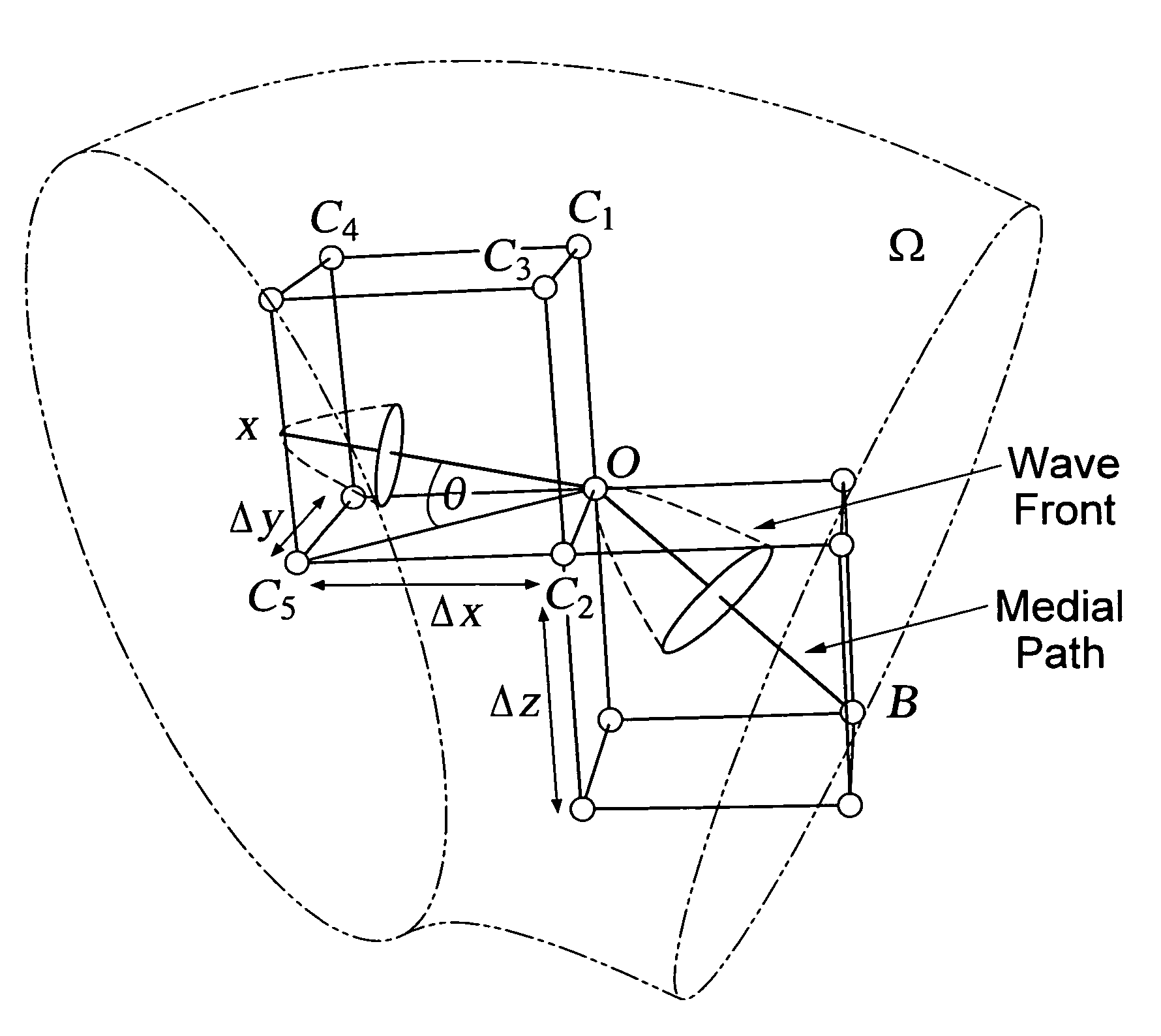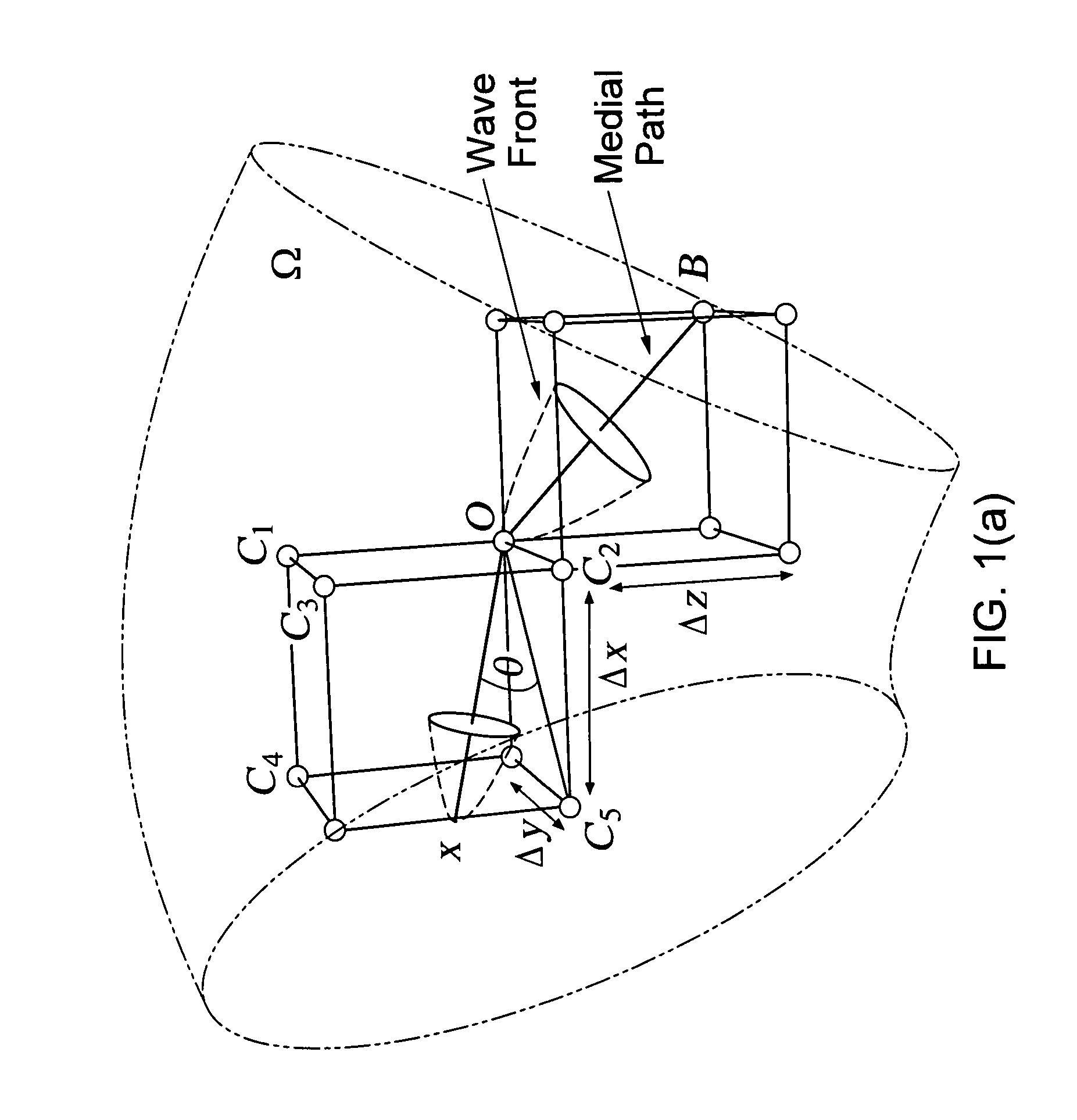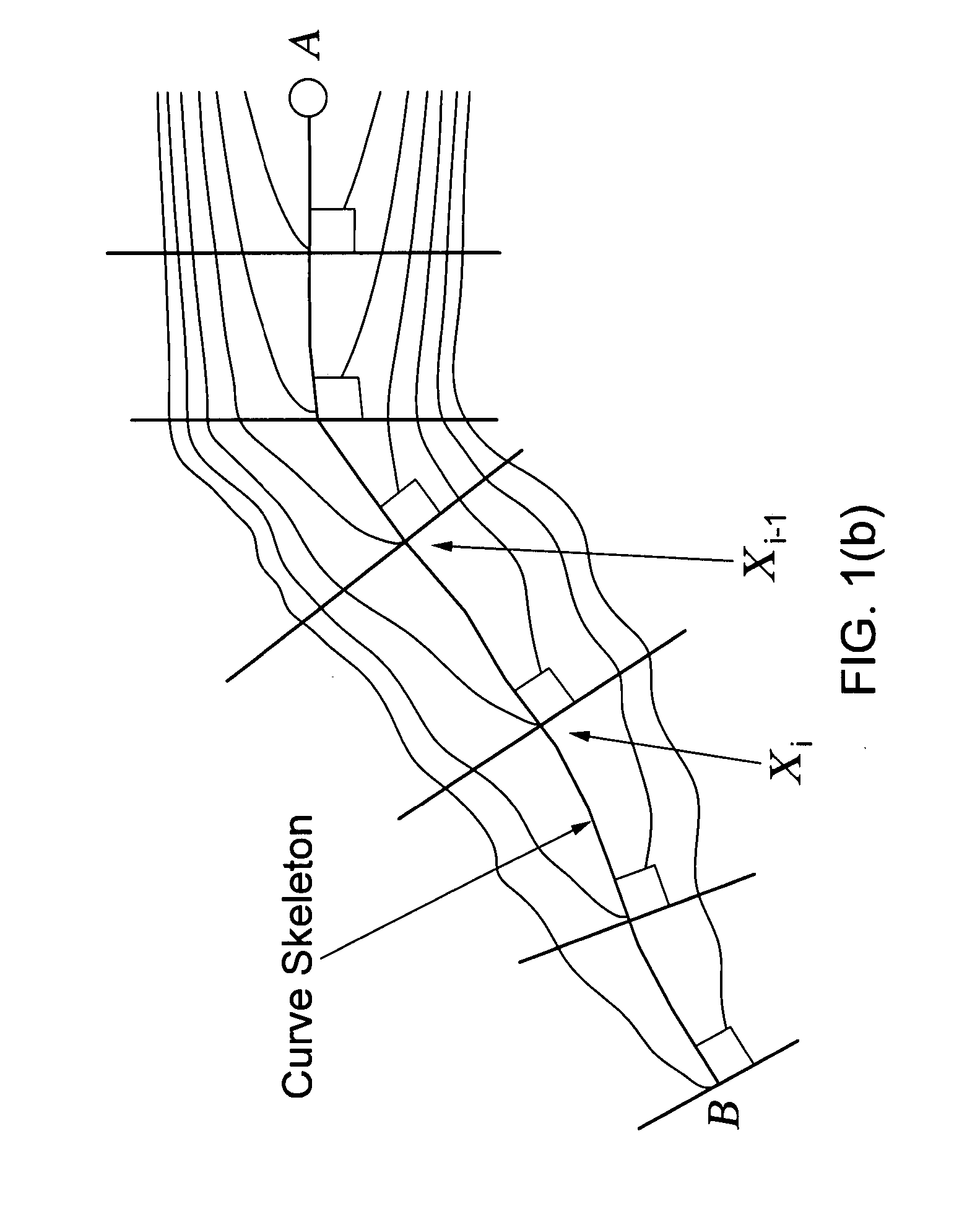Method and software for shape representation with curve skeletons
a curve skeleton and shape technology, applied in image analysis, image enhancement, 2d-image generation, etc., can solve the problems of many undesired small branches, color and texture (photometric data) are not always available, and the type of graph does not capture the shape geometry of the shape, so as to achieve less sensitive to boundary noise
- Summary
- Abstract
- Description
- Claims
- Application Information
AI Technical Summary
Problems solved by technology
Method used
Image
Examples
Embodiment Construction
[0026] The invention provides a sub-voxel accurate and robust variational framework for computing continuous curve skeletons from discrete objects that are represented by closed manifolds. In methods and software of the invention, code propagates inside the object, monotonic waves of different speeds to initially extract the topology of the shape and then compute the desired curve skeletons.
[0027] Embodiments of the invention utilize a variational framework for computing curve skeletons (CS). Embodiments utilize an energy function, which is proportional to some medialness function, such that the minimum cost path between any two medial voxels in the shape is a curve skeleton. Different medialness functions include the Euclidean distance field and a modified version of the magnitude of the gradient vector flow (GVF), which results in two different energy functions. The first energy function controls the identification of the topological nodes of the shape from which curve skeletons ...
PUM
 Login to View More
Login to View More Abstract
Description
Claims
Application Information
 Login to View More
Login to View More - R&D
- Intellectual Property
- Life Sciences
- Materials
- Tech Scout
- Unparalleled Data Quality
- Higher Quality Content
- 60% Fewer Hallucinations
Browse by: Latest US Patents, China's latest patents, Technical Efficacy Thesaurus, Application Domain, Technology Topic, Popular Technical Reports.
© 2025 PatSnap. All rights reserved.Legal|Privacy policy|Modern Slavery Act Transparency Statement|Sitemap|About US| Contact US: help@patsnap.com



